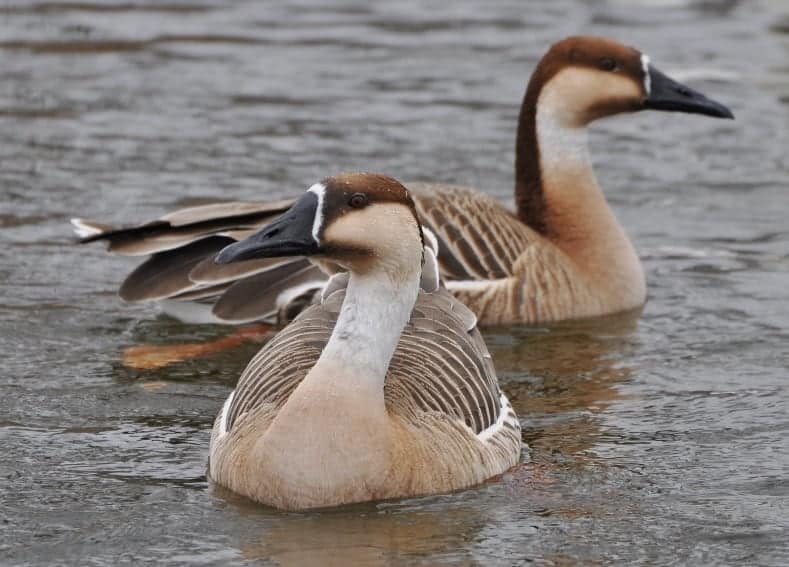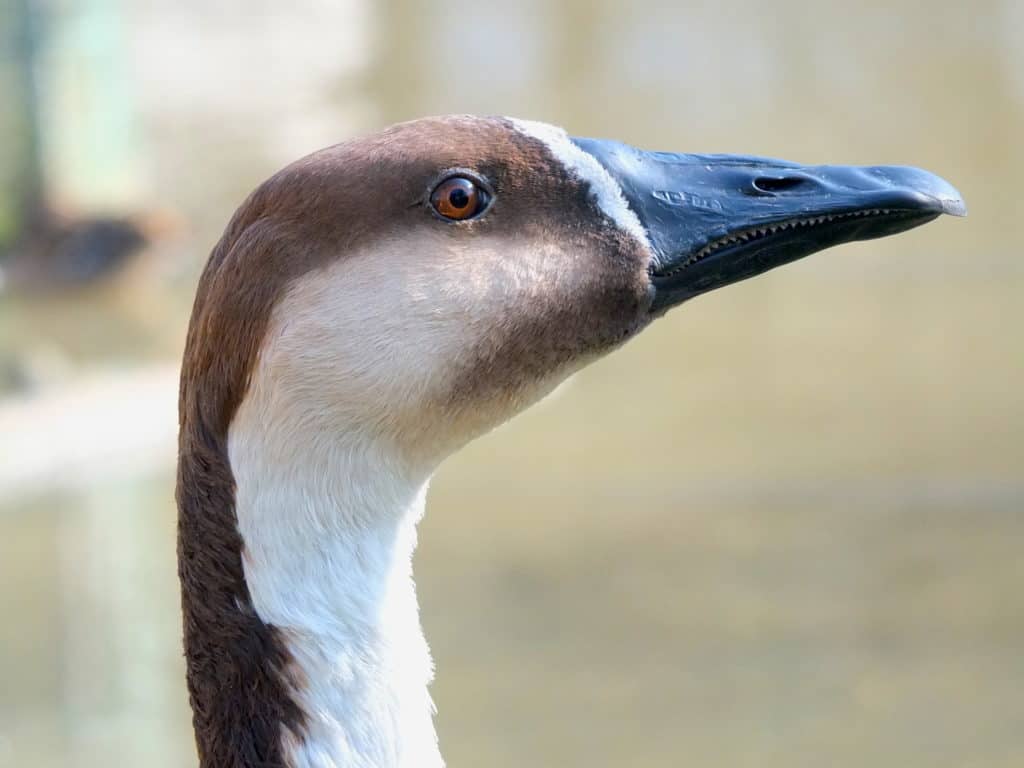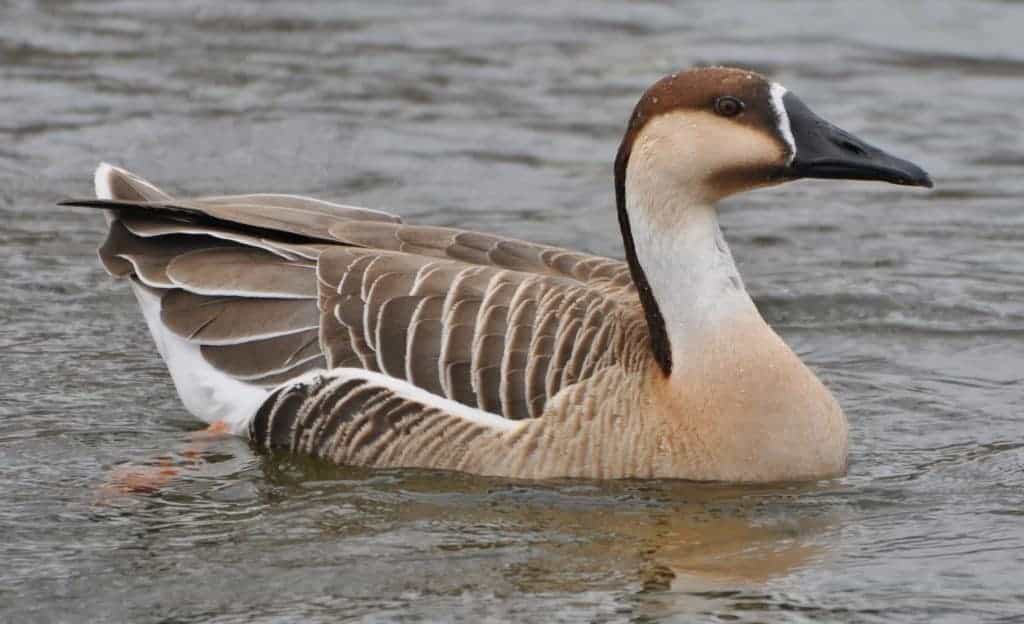Swan Goose


Anser cygnoid
Tall and elegant, the wild Swan Goose comes from central Asia, from Siberia to Mongolia and northern China. It is almost entirely vegetarian, eating sedges, with other grasses in the summer.
Interestingly, from a keeper’s point of view, the Swan Goose complements other geese in a collection because it will eat slightly longer grass. The bill is not really adapted for grazing very short turf, but more for grass that can be sheared off with a sideways motion.

The Swan Goose has been domesticated for several thousand years in China. The domestic breeds known as African and Chinese geese are descended from the Swan Goose. These breeds have a significant bill knob, barely perceptible in their wild ancestor.
The domestic geese originating from the Greylag and those descended from the Swan Goose do interbreed. These crosses have produced the different breeds of Russian geese such as the Tula, Asamas and Kholmogory, plus the beautiful Blue Steinbacher Goose.
The Swan Goose matures at 2-3 years and lays 5-8 eggs in a shallow grassy nest, sometimes on a little mound. They can sometimes surprise you by nesting in slightly higher places, such as broad crooks in trees. Incubation is between 28 and 30 days.
Share this page